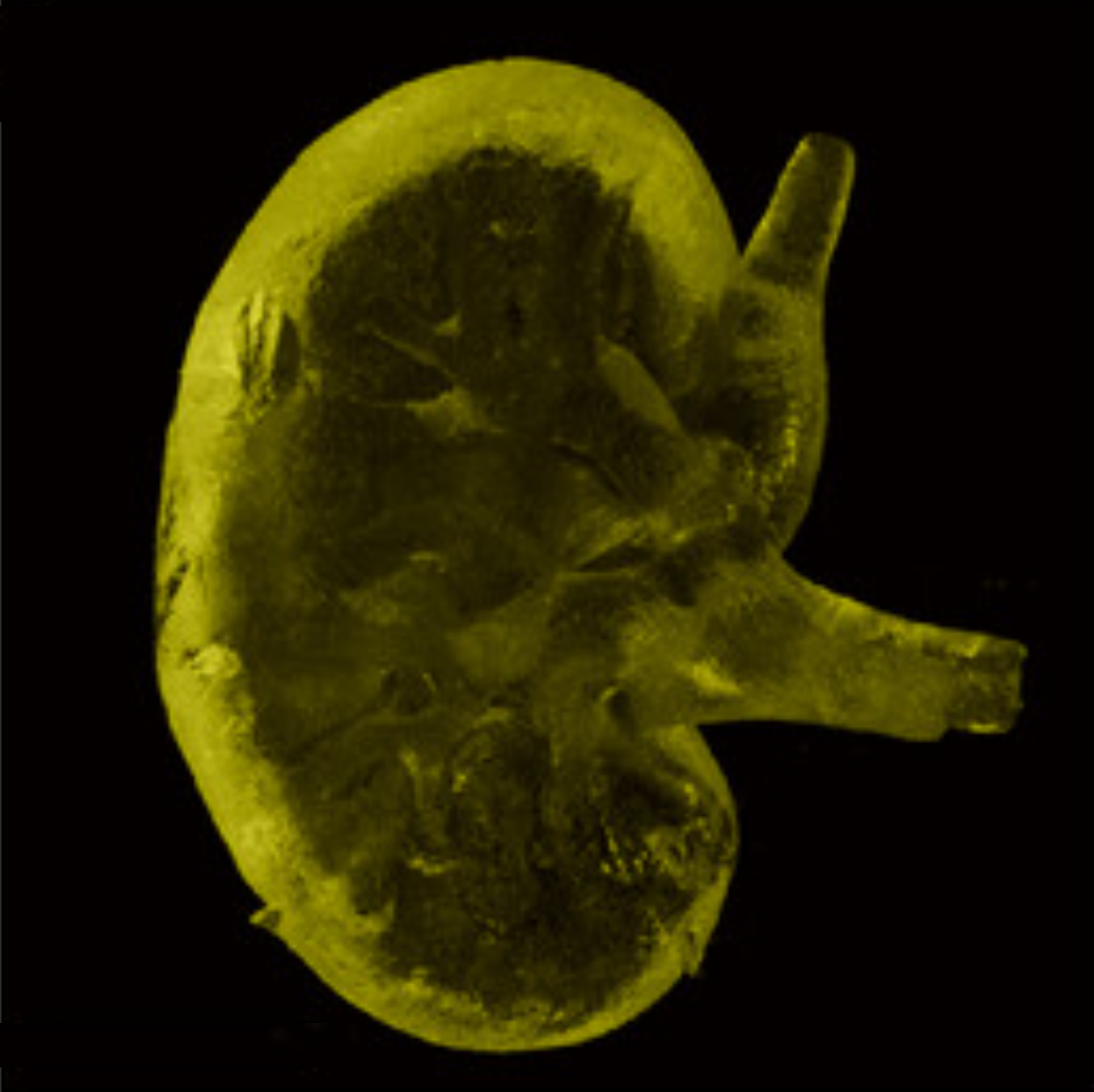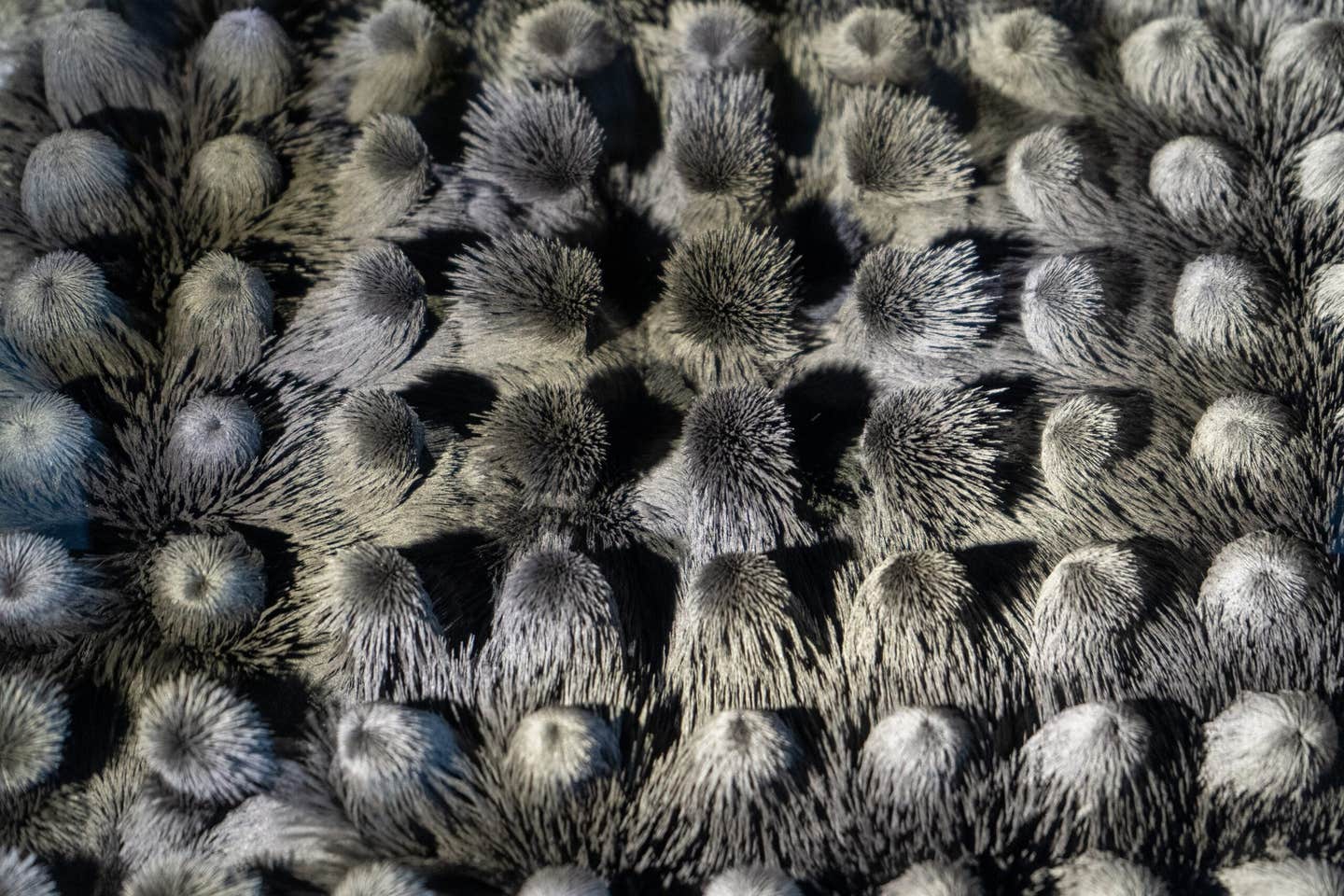Gamechanging transistor can process data at the speed of light!
Traditional transistors lose heat energy and limit the speed of signal transfer, which can degrade performance.

[Nov. 23, 2023: JD Shavit, The Brighter Side of News]
Schematic overview of a phase-separated Anderson localization fiber as quantum channel between a transmitter and receiver. The illustration shows that quantum correlations such as entanglement are maintained during transport from the transmitter (generation) to receiver (detection) all the way along the fiber. (CREDIT: ICFO/ A. Cuevas)
Marvel's Ant-Man may seem like a fictional character with impossible abilities, but the truth is that the secret to his strength lies in the "transistors" on his suit. These transistors amplify weak signals, allowing him to produce strong energy despite his small body. However, traditional transistors lose heat energy and limit the speed of signal transfer, which can degrade performance.
To overcome these limitations, a team of researchers from the Pohang University of Science and Technology (POSTECH) and ITMO University in Russia jointly developed a "nano-excitonic transistor" using intralayer and interlayer excitons in heterostructure-based semiconductors.
Excitons, responsible for the light emission of semiconductor materials, are essential for developing next-generation light-emitting elements with less heat generation and a light source for quantum information technology. There are two types of excitons in a semiconductor heterobilayer: intralayer excitons with a horizontal direction and interlayer excitons with a vertical direction.
Optical signals emitted by the two excitons have different lights, durations, and coherence times. Selective control of the two optical signals could enable the development of a two-bit exciton transistor. However, controlling intra- and interlayer excitons in nano-scale spaces is challenging due to the non-homogeneity of semiconductor heterostructures, low luminous efficiency of interlayer excitons, and the diffraction limit of light.
Related Stories
The team's previous research proposed technology for controlling excitons in nano-level spaces by pressing semiconductor materials with a nano-scale tip. For the first time ever, researchers were able to remotely control the density and luminance efficiency of excitons based on polarized light on the tip without directly touching the excitons.
This method combines a photonic nanocavity and a spatial light modulator, and its most significant advantage is that it can reversibly control excitons, minimizing physical damage to the semiconductor material. The nano-excitonic transistor that utilizes light can process massive amounts of data at the speed of light while minimizing heat energy loss.
The ever-increasing volume of information should be collected and processed as more and more fields utilize artificial intelligence (AI). AI has made inroads into our lives more quickly than we ever expected, and it requires huge volumes of data for learning to provide good answers that are helpful for users.
This research is expected to propose a new data processing strategy befitting an era of data explosion. Yeonjeong Koo, one of the co-first authors of the research paper, said, "The nano-excitonic transistor is expected to play an integral role in realizing an optical computer, which will help process the huge amounts of data driven by AI technology."
The research, published in the international journal ACS Nano, was supported by the Samsung Science and Technology Foundation and the National Research Foundation of Korea. Professor Kyoung-Duck Park and Yeonjeong Koo from the Department of Physics at POSTECH and Professor Vasily Kravtsov from ITMO University led the joint team in developing the nano-excitonic transistor.
Excitons and Heterobilayer Semiconductors
Excitons are bound states of an electron and a hole in a solid material that result in the emission of photons. They are responsible for the light emission of semiconductor materials, which has made them essential for developing next-generation light-emitting elements with less heat generation and a light source for quantum information technology. The properties of excitons, such as their energy, lifetime, and spin, are highly tunable, making them suitable for a wide range of applications.
Study Abstract: Optical computing with optical transistors has emerged as a possible solution to the exponentially growing computational workloads. (CREDIT: ACS Nano)
Heterobilayer semiconductors, which are composed of two different semiconductor monolayers stacked together, have been a popular research topic for several years now. They offer a range of unique electronic and optical properties that cannot be found in conventional bulk materials. One of the most fascinating aspects of heterobilayer semiconductors is their ability to host excitons, which are pairs of electrons and holes bound together by Coulomb attraction.
Excitons are not only fundamental entities in solid-state physics but also have many potential applications in optoelectronics, such as solar cells, light-emitting diodes (LEDs), and lasers. In heterobilayer semiconductors, there are two types of excitons: the intralayer excitons confined within a single monolayer and the interlayer excitons spanning across the two monolayers. The latter have a longer lifetime and a larger binding energy than the former, making them more promising for device applications.
Study Abstract: Optical computing with optical transistors has emerged as a possible solution to the exponentially growing computational workloads. (CREDIT: ACS Nano)
However, the interlayer excitons are also more challenging to manipulate and control than the intralayer excitons due to their weaker optical transitions and smaller spatial extent. To address this issue, the research team led by Prof. Park and Prof. Kravtsov came up with a novel concept of using polarized light to selectively excite and control the interlayer excitons in a heterobilayer semiconductor.
They first created a heterobilayer consisting of a monolayer of tungsten diselenide (WSe2) and a monolayer of molybdenum disulfide (MoS2), which are both two-dimensional materials with a hexagonal lattice structure. The two monolayers were stacked vertically, forming a type-II band alignment with a staggered bandgap, where the valence band of WSe2 is higher than the conduction band of MoS2.
This band alignment creates a built-in electric field at the interface between the two monolayers, which separates the electrons and holes and enhances the formation of interlayer excitons. The researchers then fabricated a photonic nanocavity on top of the heterobilayer, which consists of a thin layer of titanium dioxide (TiO2) sandwiched between two gold mirrors.
The nanocavity acts as a resonator that traps the light within a small volume, increasing the interaction between the light and the heterobilayer. They also incorporated a spatial light modulator (SLM) into the setup, which is a device that can manipulate the amplitude and phase of the incident light with high precision and speed.
By adjusting the polarization of the incident light using the SLM, the researchers were able to selectively excite the interlayer excitons while leaving the intralayer excitons unexcited. They found that the efficiency of interlayer exciton generation could be enhanced by a factor of up to 20 by using polarized light compared to unpolarized light. They also demonstrated the reversible switching of the interlayer exciton emission by reversing the polarization of the incident light.
The most significant advantage of this method is that it can control the interlayer excitons remotely without physically contacting the heterobilayer, which can minimize the damage and contamination to the sample. This opens up new possibilities for integrating interlayer excitons into various optoelectronic devices, such as transistors, modulators, and detectors.
The researchers further investigated the optical properties of the interlayer excitons using various spectroscopic techniques, such as photoluminescence (PL), reflectance, and transmission measurements. They found that the interlayer excitons exhibit a unique polarization-dependent PL behavior, where the emission intensity and wavelength depend on the polarization of the incident light.
They attributed this phenomenon to the anisotropic nature of the interlayer excitons, which have different dipole moments along the vertical and horizontal directions. This polarization-dependent behavior could be useful for designing new types of optoelectronic devices that exploit the unique properties of interlayer excitons.
According to Professor Park, "The ability to control the density and efficiency of excitons with light is a significant advance in the field of excitonics. This approach could be used to develop a range of novel devices, such as exciton-based transistors, light-emitting diodes, and quantum information processors."
The research team's findings have significant implications for the development of new optoelectronic devices that are faster, more energy-efficient, and capable of handling massive amounts of data. Exciton-based transistors, for example, could revolutionize the field of electronics by enabling faster and more efficient data processing.
Excitonic devices are also expected to play an integral role in the development of optical computers, which use light instead of electricity to transmit data. Unlike traditional electronic computers, which are limited by the speed of electrons, optical computers are capable of processing data at the speed of light.
Overall, the development of the nano-excitonic transistor is a significant step forward in the field of excitonics, paving the way for the development of faster, more energy-efficient optoelectronic devices. As research in this field continues to advance, we can expect to see even more exciting developments in the near future.
For more science and technology news stories check out our New Innovations section at The Brighter Side of News.
Note: Materials provided above by The Brighter Side of News. Content may be edited for style and length.
Like these kind of feel good stories? Get the Brighter Side of News' newsletter.



